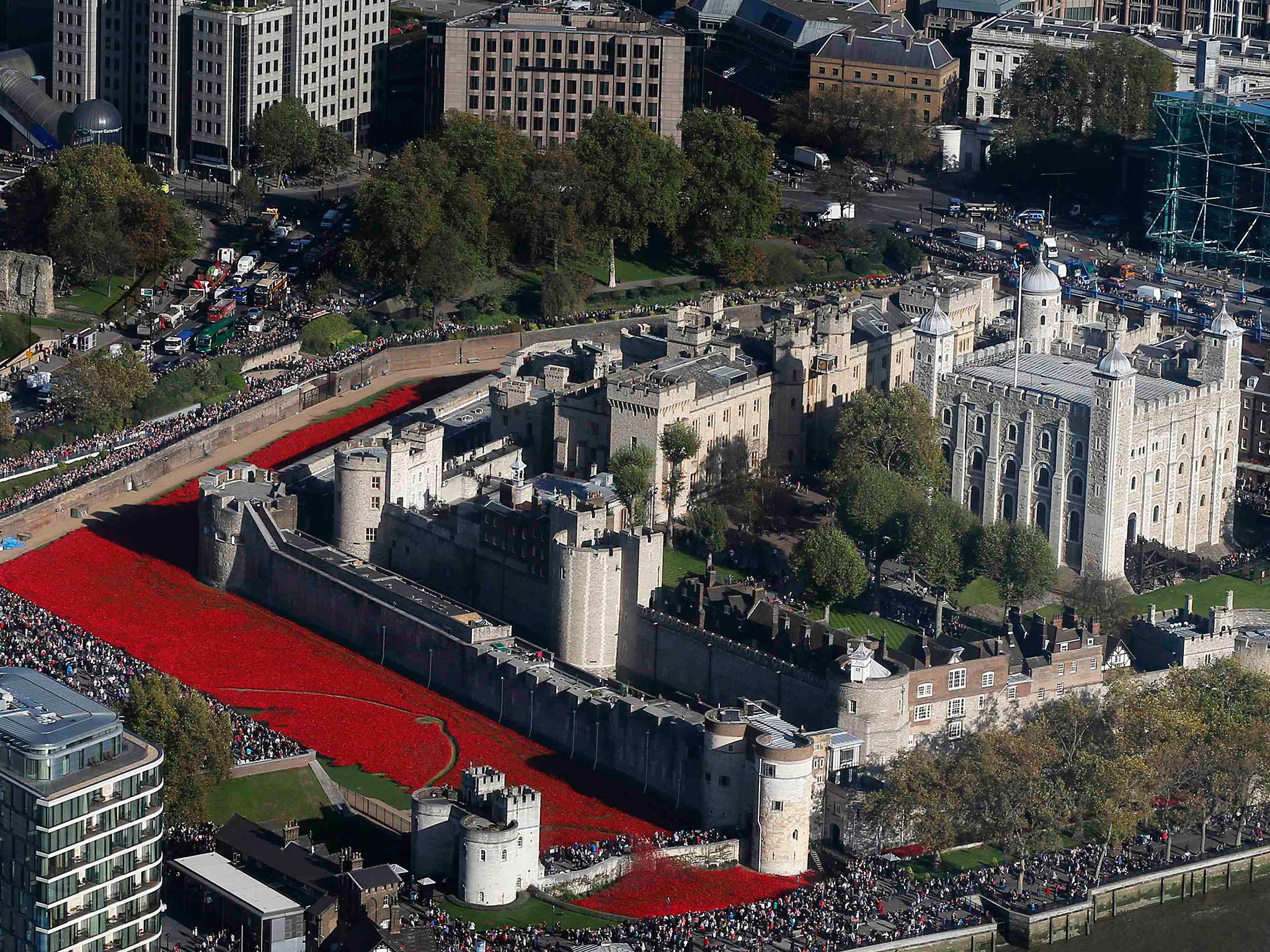Tower of London poppies: WW1 centenary installation almost complete ahead of Remembrance Day
Each of the 888,246 poppies represent a life lost between 1914 and 1918

The blanket of ceramic poppies planted outside the Tower of London to commemorate the centenary of the First World War is now a fortnight from completion.
On Armistice Day the final flower of the 'Blood Swept Lands and Seas of Red’ installation will be planted, colouring the lawn outside the capital's iconic monument blood red.
By 11 November, 8,000 volunteers will have placed a staggering 888,246 ceramic poppies into the grass - each representing the life of a solider from Britain or the Commonwealth lost in WWI.
The flowers, which each took three days to make and cost artist Paul Cummins a finger, have all been sold and will be plucked from the ground and sent to buyers when the exhibit closes.
The sale is expected to raise £11.2 million for charities which serve British veterans, including Help for Heroes and The Royal British Legion.
Read more: How to see the spectacular poppy installation
Tower of London poppy artist lost a finger
Ex-Royal Marine runs through London in the shape of a poppy
By Armistice Day, it is predicted that four million people will have visited the tribute which opened this summer.
A Tower of London spokesman told the Mail Online today that the attraction is “extremely busy” and confirmed visitor numbers have increased greatly compared to the same period last year.
Since the First World War, the poppy has been a traditional symbol of remembrance in Britain, when a poem from the era recalled the fragile flower melding with the dead in Flanders.
Join our commenting forum
Join thought-provoking conversations, follow other Independent readers and see their replies
Comments